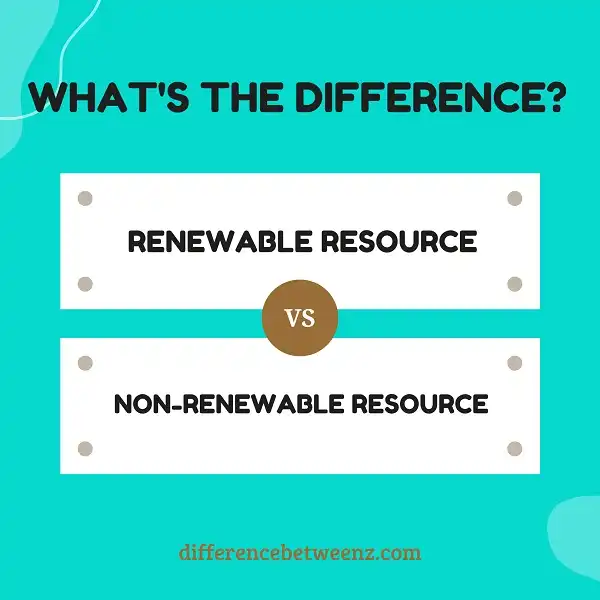In general, there are two types of resources: renewable and non-renewable. Renewable resources can be replenished naturally over time, while non-renewable resources cannot be replaced. It’s important to understand the difference between these two types of resources, as they have different implications for our environment and economy. Let’s take a closer look at each type of resource.
What is a Renewable Resource?
Renewable resources are sources of energy that can be used over and over again and will never run out. These types of resources include solar power, wind power, and hydroelectricity. Non-renewable resources, such as fossil fuels, can only be used once and then they are gone forever. Renewable resources are important because they can help to reduce pollution and climate change. They are also more sustainable in the long run since they will never run out. For these reasons, it is important to invest in renewable resources.
What is a Non-renewable Resource?
- Non-renewable resources are those that cannot be replenished in a short period of time. They are largely finite, and once they are used up, they are gone forever.
- Common examples of non-renewable resources include fossil fuels such as coal, oil, and natural gas. Non-renewable resources are extracted from the ground and used to generate energy. They are also used in the manufacture of plastics, chemicals, and other products.
- Non-renewable resources are an essential part of our modern way of life, but their use comes at a cost. Because they cannot be replaced, Non-renewable resources are slowly being depleted. Once they are gone, we will have to find alternative ways to meet our energy needs.
Difference between Renewable and Non-renewable Resources
Renewable resources are those that can be replenished or replaced in a relatively short period of time. Examples of renewable resources include solar energy, wind energy, and hydroelectricity.
- Non-renewable resources, on the other hand, are those that cannot be replenished or replaced once they have been used up. Examples of non-renewable resources include fossil fuels such as coal and oil.
- The main difference between renewable and non-renewable resources is their ability to be replenished or replaced. Renewable resources can be replenished or replaced, while non-renewable resources cannot.
- This means that renewable resources are more sustainable than non-renewable resources. Renewable resources are an important part of sustainable development and the conservation of our natural environment.
Conclusion
Renewable resources are sources of energy that can be used over and over again and will never run out. These types of resources include solar power, wind power, and hydroelectricity. Non-renewable resources, such as fossil fuels, can only be used once, and then they are gone forever. Renewable resources are important because they can help to reduce pollution and climate change.


